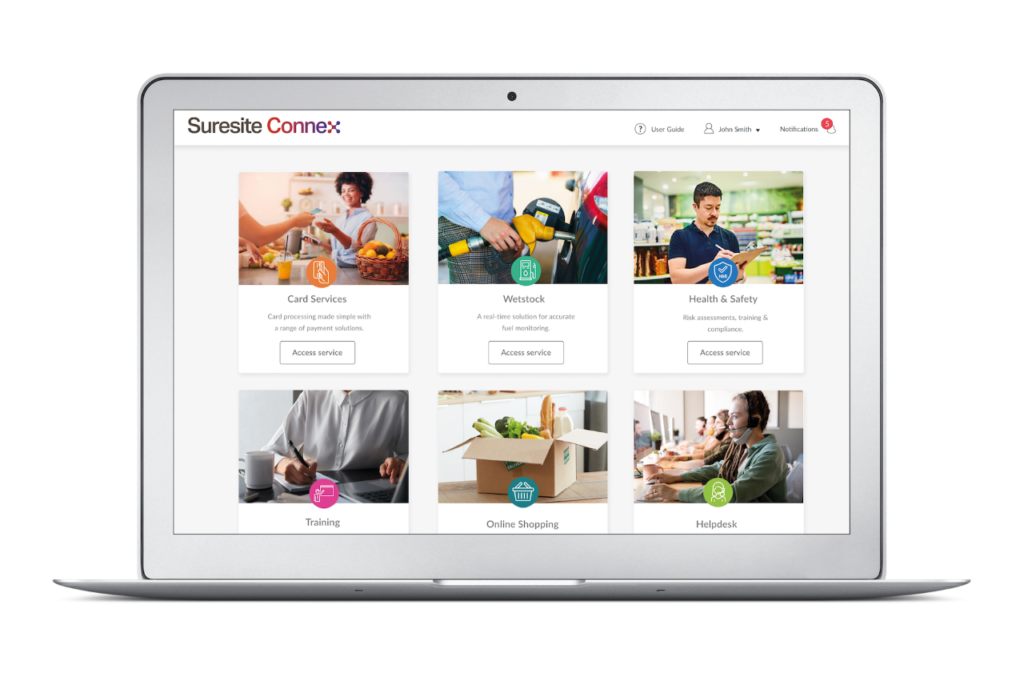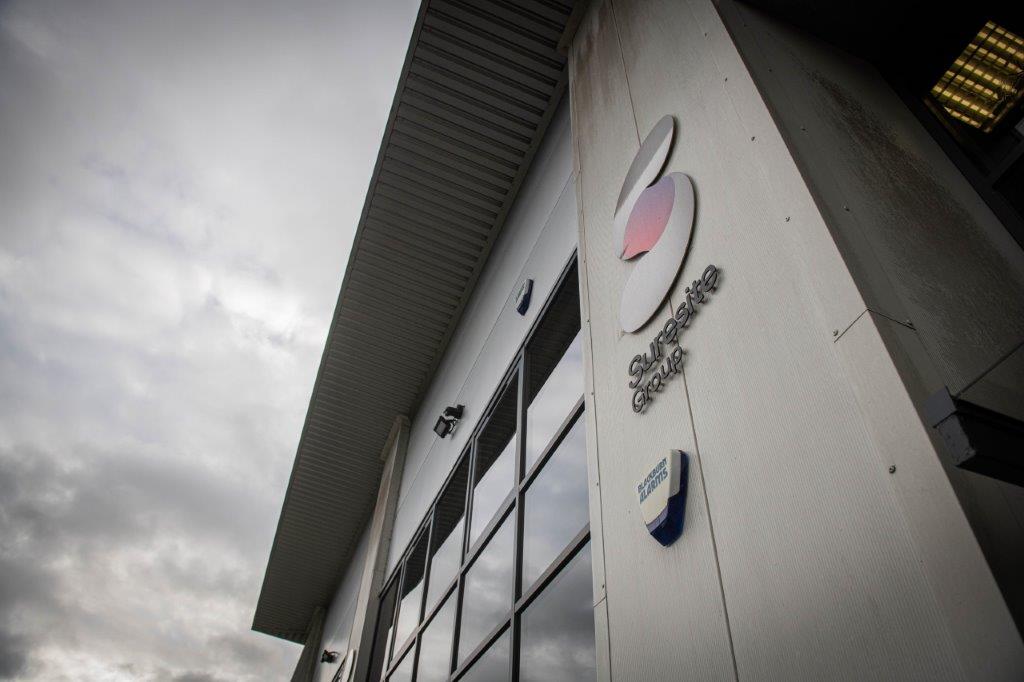Today’s world is digital, data is king, and for many long-established SMEs, who have successfully operated for 20 or more years, digital transformation is no easy feat – especially given the rate of technological development and changes in customer behaviour (and society in general) due to the pandemic. It can however, mean the very difference between growth and decline, which is why we set out on a simple but crucial transformation journey of our own: building a one-stop shop solution and portal for all of our services, in house.
SMEToday spoke to Steve Hoban, CEO of Suresite around the topic of  technological development and why he thinks SMEs shouldn’t delay their digital transformation journeys.”
technological development and why he thinks SMEs shouldn’t delay their digital transformation journeys.”
Why a ‘one-stop-shop’ was a win-win
Looking back to last year, before the concept of Connex was even being discussed, Suresite was quite a siloed business – in terms of the products and services we provided.
Our customers took services that they could access and manage through portals requiring a unique username and password, and taking multiple services from us meant that they’d need additional portal log-ins for each service. We discovered that this meant our customers didn’t have visibility of the breadth of services we could offer – resulting in very few of our customers buying more than one product from Suresite.
We wanted to provide a ‘one stop shop’ for our customers to simplify the customer journey and enable them to see all our other products in one place. In addition, we wanted to launch new products and services that would help our customers to grow. Rather than opt for an off the shelf digital product, we decided to build the platform in-house – utilising our expert development team – taking five months planning and six months to build.
Suresite now has a customer portal, Connex, that requires a single sign-on, allowing customers to see all of the services available to them, and access and manage the products they take from us via a single dashboard. From a customer perspective, we have simplified their journey and experience, whilst allowing the business a potential for lead generation and upsell by tracking customer behaviour on the portal. We can now use Connex to launch and market additional products and solutions that enable our customers to grow – because when they grow, we grow.
that requires a single sign-on, allowing customers to see all of the services available to them, and access and manage the products they take from us via a single dashboard. From a customer perspective, we have simplified their journey and experience, whilst allowing the business a potential for lead generation and upsell by tracking customer behaviour on the portal. We can now use Connex to launch and market additional products and solutions that enable our customers to grow – because when they grow, we grow.
MVP vs the “perfect” online portal
Building and launching Connex in six months was a tough ask, so probably the biggest challenge encountered was the pressure on the team to deliver on the deadline. We set a six-month deadline in August 2021 for January the following year. Though the journey towards a one-stop portal began much earlier – including discovery and fact finding in the months leading up to August.
We engaged with external service providers during that period – which helped us to identify that we really were trying to build too much, too fast. Seeking high-spec ‘perfection’ is likely to result in overspend and delays – and some kind of business inertia, leaving you afraid to launch a product that doesn’t feel 100% perfect. It’s not about tempering your ambition, but about being practical. You have to launch something if you’re ever going to be able to improve on it. So our first lesson during the Connex build was to work towards a minimal viable product – something that works well for the customer, and can be continually improved and built upon over time.
The deadline to complete the build by January 2022 was purely internal – with no particular driving factor for us to hit that date, though we had booked trade shows and advertising space in order to promote the product, meaning the main thing we needed to be mindful of was the impact on marketing and the narrative we had set to run. The rise of the Omicron variant towards the end of last year also put some of this into question.
Another key point to make is that staff time also only can go so far. We had to look at other pipeline projects and allow for capacity to deliver Connex – as a result we decided to pause two pieces of work that we didn’t feel were business critical.
The importance of good planning and project management
 The other challenge we came up against during the product build was cross-functional working. As a siloed business, the ability for different departments to work together on a large project was new to use and something we needed to be mindful of.
The other challenge we came up against during the product build was cross-functional working. As a siloed business, the ability for different departments to work together on a large project was new to use and something we needed to be mindful of.
Working across teams – that are used to functioning independently – meant potential for miscommunication or misunderstanding. We solved that problem, mainly by good project management – making sure there were weekly and monthly team calls and board updates.
Crucially, the thing we might approach differently in future, is to start working on a marketing plan much earlier in the process. We really didn’t start working on that, and the budgets around it, until January, and we were set to launch at the end of the same month. Better marketing planning is really key. As an aside – we also didn’t set goals and targets for Connex until much later in the development process, which fundamentally should feed into a marketing plan.
In the end it all came together, and the marketing plan was properly implemented behind the launch, but I wonder if there might have been potential for some bigger, more creative marketing behind Connex, had there been more time to do it.
Saying this, you can have all the bells and whistles in your marketing that you want. But if your product doesn’t work when it goes out, or something’s not quite right for your customers, then those bells and whistles mean nothing.
SMEs – don’t delay your digital transformation journeys
We know first hand how digital transformation as an SME is key to growth, to meeting customer needs, and allowing a business to compete with other tech-savvy start-ups in the field. Connex is now seen by 3000+ customers and has enjoyed a 30% increase in number of unique users in May alone. We have cross sell targets that should effectively cover the costs of development in 18 months time.
I’ve actually never really liked the phrase ‘digital transformation’ – everyone talks about it and every industry appears to be ‘digitally transforming’. All it really means is that we’re modernising the way we interact with our customers – making it much more frictionless.
There are sectors which are quite traditional in terms of how they work, and some of that is important because it’s ring-fenced with specific legislation. But I think the efficiency and increased speed of doing business is a huge opportunity. The fuel, forecourt and convenience sectors – just some of the verticals in which we operate – often struggle with inefficiency due to legacy systems and infrastructure, and so for these businesses, digital transformation (or however you might like to describe it) can mean the very difference between growth, inertia – or worse, decline.
Such projects can come with large costs, and require immense time and effort. This can be a barrier, and the fuel industry is at a bit of a crossroads on how best to move forward, especially with the climate crisis and the move to green alternatives.
The real dilemma for firms – and I’m not just talking about the fuel sector here – is to know which is the right time and the right route. Where in my business do I transform? Which bit do I invest in? How do I implement and manage the technology? And perhaps most importantly, how do I get my staff onboard with this transformation?
These are big questions and can lead to inertia. The most important thing is to be clear about how you want to improve your business for your customers, colleagues and shareholders, and set out a simple plan that everyone can get excited about.
From Suresite’s and our users’ perspective, it just makes good business sense that our customers can see everything that we do in one place to simplify their interaction with those systems. Being simpler also makes it faster and cheaper. That’s got to be better. I’m not sitting here trying to preach to customers that they must digitally transform their business. But if, as an SME, you are able to continually improve your offering with innovation, then ultimately you’ll help improve your customers’ businesses. And that will generate loyalty – and increase your bottom line.

